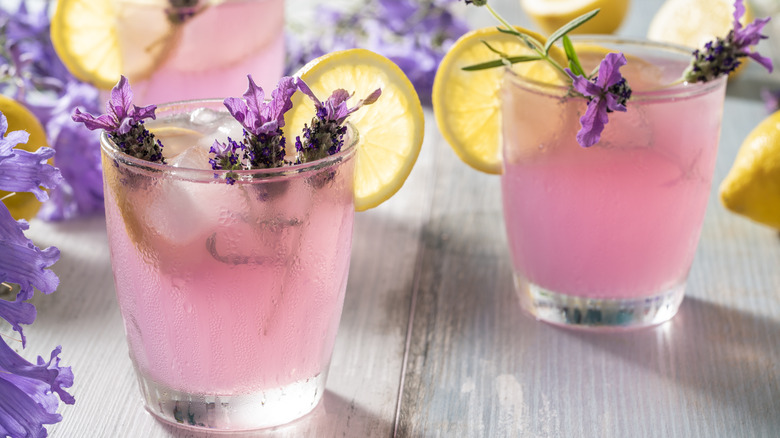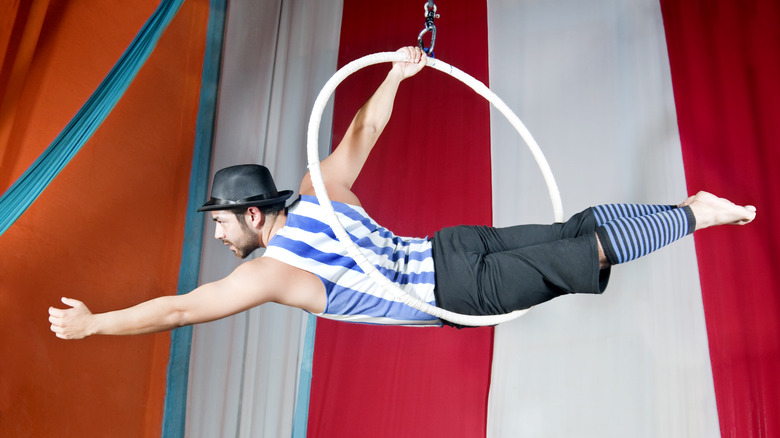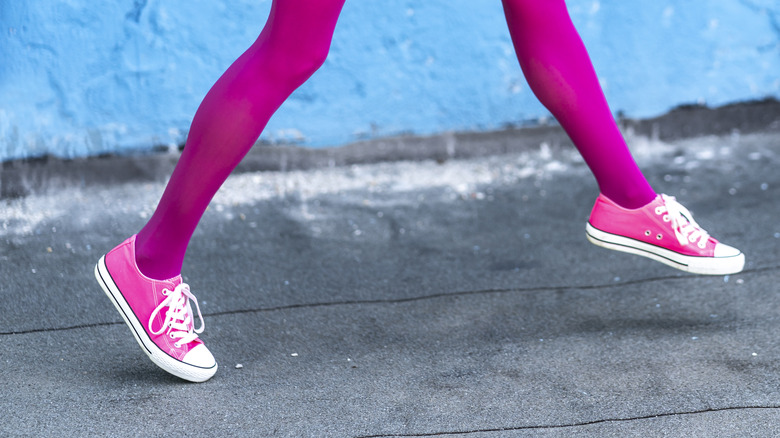The Origin Of Pink Lemonade Was A Bizarre Accident
Nothing says "summer vacation" like a cold glass of pink lemonade. But you've probably never thought much about how the sweet and sour drink got its signature color. Maybe you came across a bag of pink lemons in the grocery store one time and figured that must be where the story begins. The green and yellow-striped lemons are, in fact, pink on the inside. And because they're sweeter and not quite as tart as normal lemons, they happen to smell exactly like the sugary pink lemonade your mom mixed up from a tin full of fuschia powder.
But, alas, pink lemons produce a nearly colorless juice. So it's necessary to look back at history to figure out when we started drinking lemonade the color of bubblegum.
Pink lemonade dates back at least to the late 19th century. And although various theories abound, they all point to one place: the circus.
Bunk Allen and cinnamon candies
Pink lemonade likely became popular in the middle of the 1800s, around the time when traveling circuses like P.T. Barnum's began to draw in excited crowds from all around the United States.
Lemonade, which had been brought to America by way of Europe in the 1600s, was given a dye job and a marketing push. It became popular as a cold, refreshing drink to enjoy during a hot summer day at the circus.
Circus performer Henry E. Allott, also known as "Bunk," is one possible inventor of pink lemonade. The Chicago-born circusman ran away to join the circus as a teenager and worked selling lemonade to thirsty visitors. One day, he supposedly spilled cinnamon candies in the vat of lemonade, and their red dye turned the mixture pink. He sold it anyway, and folks seemed to enjoy the whimsical shade, making it an instant classic.
The acrobat's tights
Another theory about the invention of pink lemonade points to something a little less hygienic. As the story goes, in 1857, the brother of lion tamer George Conklin, Pete, was selling lemonade at the circus when he ran out of water. Desperate to keep the concessions moving, Pete used dirty water in which an acrobat was washing her pink tights, turning the lemonade pink. The drink was coyly called "strawberry lemonade," and no one seemed to notice their strawberries tasted suspiciously like dirty laundry.
Other versions of this story involve red tights flying off a clothesline and into a tub of water and a red blanket falling into a horse's trough of water. And W.H.A. Tobey of Forepaugh's circus and William Henry Griffith tell tales similar to Conklin's.
One can suppose that the moral of this story is to wash red fabrics separately, lest you risk inciting a centuries-long new beverage trend.



